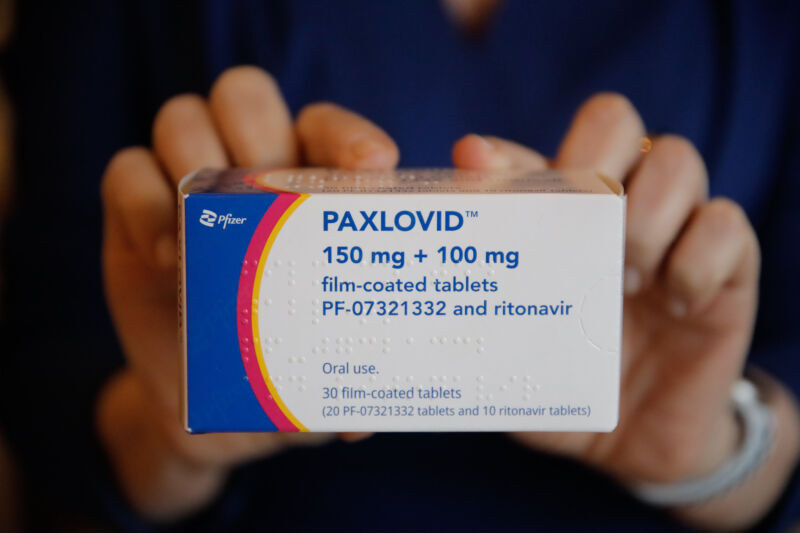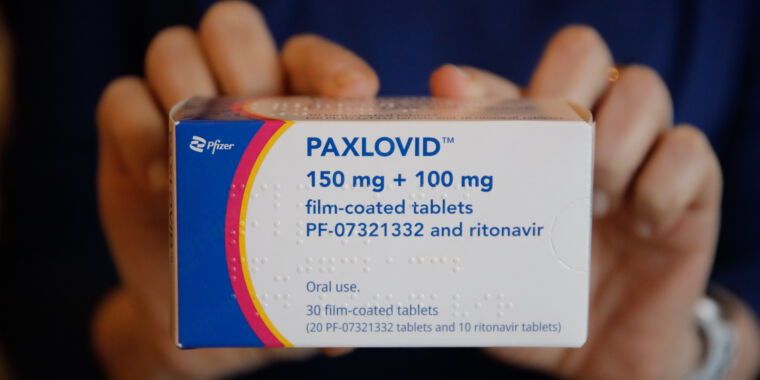
Pfizer’s antiviral pill Paxlovid is one of the most cherished tools to fight COVID-19; it could reduce the relative risk of hospitalization and death by 89 percent in unvaccinated patients at high risk for serious disease. But as use of the handy drug has increased in the US, there have also been troubling reports of rebound cases — people who took the pill early in their infection started feeling better and even tested negative, then relapsed into symptoms. and tested positive again days later.
It is still unclear how common the phenomenon is, but it certainly occurs in a certain proportion of patients treated with Paxlovid. In May, the Centers for Disease Control and Prevention even issued a health warning over the rebound reports.
But amid the increasing awareness, it has also become clear that patients who have not been treated with Paxlovid can also rebound. In fact, in Pfizer’s clinical trials of Paxlovid, researchers noted that about 1 to 2 percent of both the treatment and placebo groups had rebounds.
Together, this has raised a whole host of questions: Are the rebounds re-infected infections? Are people still contagious? Should they resume isolation? Are they again at risk of serious illness? Has their immune system failed to mount an effective response? Does the virus mutate to become resistant to Paxlovid? Does omicron cause more rebounds than previous variants?
So far there is limited data and mostly only anecdotal reports. But a new, small pre-print study led by researchers at the National Institutes of Health offers encouraging news about COVID rebounds. The study, which included data from seven rebound patients — six of whom were treated with Paxlovid and one who was not — found no evidence of Paxlovid-resistant mutations, viral replication going wild, or faltering immune responses.
Intact immune responses
Instead, a detailed look at their immune responses showed that rebounds were associated with an increase in antibody and cellular immune responses specific to SARS-CoV-2. At the same time, rebounds were associated with downward trends in markers of innate (nonspecific) immune responses, as well as levels of SARS-CoV-2 nucleocapsid bits in the blood.
Together, the findings suggest the rebounds may be due, in part, to a re-ignited immune response, as the body works to clear cell debris and viral debris from a rapidly smothered infection. Or, as the authors put it, “rebound symptoms may in fact be caused in part by the emerging immune response to residual viral antigens that may be rejected by dying infected cells as a result of cytotoxicity and tissue repair in the respiratory tract.”
In further support of this, the authors – co-led by infectious disease experts Brian Epling and Joe Rocco – note that while three of the four controls had a recoverable, live virus during their acute infection, only one of the seven recurrent patients had a live virus. had. virus at the time of their rebound. And that one patient also had underlying immunosuppression, which could explain the finding. Furthermore, none of the relapsing patients developed serious disease.
The study, again, is very small and cannot be generalized to all rebound cases. The authors argue for rebound studies with larger cohorts. But some elements of the findings have already been backed up. For example, other studies have also failed to identify Paxlovid-resistant mutations. And on Tuesday, the CDC published a study of more than 5,000 Paxlovid-treated patients, which found that less than 1 percent of patients had emergency visits or hospitalizations in the 5 to 15 post-treatment rebound period.
For now, the NIH researchers find their new findings “encouraging.” As Epling wrote in a tweet on tuesdayThe findings suggest that “an appropriate immune response develops, so rebound is not caused by people not developing an immune response to COVID while taking Paxlovid.”

